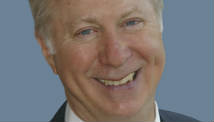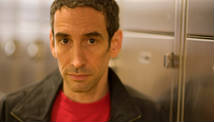Earth is constantly crashing through huge walls of dark matter, and we already have the tools to detect them. That's the conclusion of physicists who say the universe may be filled with a patchwork quilt of force fields created shortly after the big bang.
Observations of how mass clumps in space suggest that about 86 per cent of all matter is invisible dark matter, which interacts with ordinary matter mainly through gravity. The most popular theory is that dark matter is made of weakly interacting massive particles.
WIMPs should also interact with ordinary matter via the weak nuclear force, and their presence should have slight but measurable effects. However, years of searches for WIMPs have been coming up empty.
"So far nothing is found, and I feel like it's time to broaden the scope of our search," says Maxim Pospelov of the University of Victoria in Canada. "What we propose is to look for some other signatures."
Bubbly cosmos
Pospelov and colleagues have been examining a theory that at least some of the universe's dark matter is tied up in structures called domain walls, akin to the boundaries between tightly packed bubbles. The idea is that the hot early universe was full of an exotic force field that varied randomly. As the universe expanded and cooled, the field froze, leaving a patchwork of domains, each with its own distinct value for the field.
Having different fields sit next to each other requires energy to be stored within the domain walls. Mass and energy are interchangeable, so on a large scale a network of domain walls can look like concentrations of mass – that is, like dark matter, says Pospelov.
If the grid of domain walls is packed tightly enough – say, if the width of the domains is several hundred times the distance between Earth and the sun – Earth should pass through a domain wall once every few years. "As a human, you wouldn't feel a thing," says Pospelov. "You will go through the wall without noticing." But magnetometers – devices that, as the name suggests, measure magnetic fields – could detect the walls, say Pospelov and colleagues in a new study. Although the field inside a domain would not affect a magnetometer, the device would sense the change when Earth passes through a domain wall.
Dark matter walls have not been detected yet because anyone using a single magnetometer would find the readings swamped by noise, Pospelov says. "You'd never be able to say if it's because the Earth went through a bizarre magnetic field or if a grad student dropped their iPhone or something," he says.
Network needed
Finding the walls will require a network of at least five detectors spread around the world, Pospelov suggests. Colleagues in Poland and California have already built one magnetometer each and have shown that they are sensitive enough for the scheme to work.
Domain walls wouldn't account for all the dark matter in the universe, but they could explain why finding particles of the stuff has been such a challenge, says Pospelov.
If domain walls are found, the news might come as a relief to physicists still waiting for WIMPs to show up. Earlier this month, for instance, a team working with a detector in Russia that has been running for more than 24 years announced that they have yet to see any sign of these dark matter candidates.
Douglas Finkbeiner of the Harvard-Smithsonian Center for Astrophysics, who was not involved in Pospelov's study, isn't yet convinced that dark matter walls exist. But he is glad that physicists are keeping an open mind about alternatives to WIMPs.
"We've looked for WIMP dark matter in so many ways," he says. "At some point you have to ask, are we totally on the wrong track?"
Journal reference: Physical Review Letters, DOI: 10.1103/PhysRevLett.110.021803
If you would like to reuse any content from New Scientist, either in print or online, please contact the syndication department first for permission. New Scientist does not own rights to photos, but there are a variety of licensing options available for use of articles and graphics we own the copyright to.
All comments should respect the New Scientist House Rules. If you think a particular comment breaks these rules then please use the "Report" link in that comment to report it to us.
If you are having a technical problem posting a comment, please contact technical support.

















